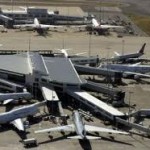
AUSTRALIAN AIRPORTS, aircraft, passengers and workers are direly exposed to terrorist attacks and airport insurers face enormous exposure from the consequences.
This message was delivered to a conference of airport operators, airline executives and airline service providers by Roger Henning of Homeland Securities in Australia in Adelaide.
To airport insurers, Mr Henning posed questions starting with: “Is the insurance industry interested in learning how to better mitigate risk and eliminate reliance on entrenched stove pipe/silo security at the few Australian airports with security?
“Does a tick or verification suffice to confirm a security assessment and revised security audit have been implemented and recommendations actioned, in this changing industry?
“Are insurers complicit if no verification of mitigation strategies has been undertaken?
“Do insurers ever require peer secondary audits of airport security to confirm improvements have been made?
“Does any insurer enforce evacuation and crisis management exercises at Australian terminals?”
Mr Henning said that compliance only met minimum standards in comparing what was needed in Australia and what had caused terrorist attacks and consequent disaster such as at Moscow airport recently.
He said: “Spin, complacency, cost cutting, a policy of airports implementing only the bare minimum in AVSEC requirements and a lack of interest in security operations, is evident.”
Major airports were designated by the Australian Government as “places of mass gathering” – dangerous places – requiring much higher levels of security.
The replacement value of infrastructure at Australia’s major airports was more than $21 billion.
There were no bollards or fences to stop cars crashing inside terminals. Curb-side uniformed security was slack.
Hundreds of unknown, unlicensed, illegal taxi drivers were on airports daily and no one really knew who was travelling on e-tickets booked online.
The major breach in tarmac safety and security constituted a national security risk.
Tarmac risks to the safety and security of airport workers, airline crews, passengers and visitors is of great concern to the TWU and associated aviation industry unions.
source: John Heath – InsuranceNewsAustralia.com
 Australia’s General Insurance has made a first – a $250,000 donation to legal aid for insured flood victims – in Queensland.
Australia’s General Insurance has made a first – a $250,000 donation to legal aid for insured flood victims – in Queensland.
